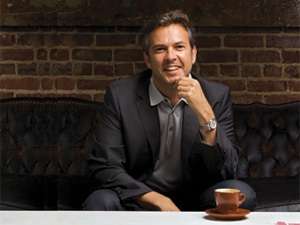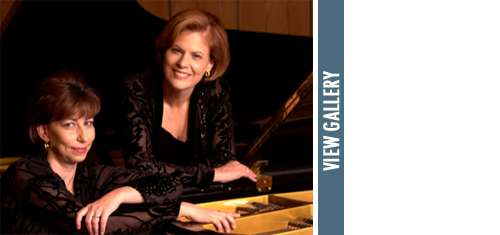|
Back
The Delights of Dixie Chuzpah New York
Isaac Stern Auditorium, Carnegie Hall
05/10/2012 -
“Spring For Music IV”
Avner Dorman: Astrolatry (New York premiere)
Paul Lansky: Shapeshifters, for two pianos and orchestra (New York premiere)
Ludwig van Beethoven: Symphony No. 7, opus 92
Quattro Mani: Susan Grace and Alice Rybek (Pianos)
Alabama Symphony Orchestra, Justin Brown (Music Director)

J. Brown (© Alabama Symphony)
Why should we have been so utterly surprised at the power of the Alabama Symphony Orchestra (ASO) last night? Yes, New York has its Juilliard School, Philadelphia has its Curtis Institute–but every village, town, hamlet and city in Alabama has high school football teams which demand the very best musicians for their marching bands.
After years of tramping up and down in every kind of weather, it must come as a relief for the elite of these terrific brass and wind players to sit down with the ASO. Their original training and experience which had been physically challenging from head to foot (literally) could now be a foundation for sometimes fiercely good playing.
The ASO was yet another orchestra from the hinterlands, introduced to Carnegie Hall to show their considerable stuff. But where other orchestras may have been loathe to play a mainstream work, for fear of comparison with the New York Philharmonic, the ASO exemplified “Dixie chuzpah” in scheduling Beethoven’s Seventh Symphony. And under their British Maestro, Justin Brown, it was a peppy, sometimes electrifying performance. Mr. Brown took them at a mighty pace, for which by and large they succeeded.
Though ASO strings, granted, do not have the luster, the unforced sheen of the New York Philharmonic, they easily sailed through the presto of the scherzo and the bumptious opening movement. Nothing was plodding about the second movement, and Mr. Brown, better known in Europe as pianist and conductor than in America, broadened the pace. The finale was as fine as anything I’ve heard here in a long time. Beethoven had written his amiable movements many times, but the Seventh finale has a Promethean grandeur. The ASO doesn’t have the forces to push this through with sheer volume. But Mr. Brown knew how to achieve divine laughter with force, urgency and a compression of emotions.
One new fact (at least to this listener) is that the ASO has been attempting to do what the Louisville Orchestra did so successfully in the 1960’s. Like the ASO, Louisville had been on the razor’s edge of bankruptcy for many years. Their director, Robert Whitney, had the brilliant idea of making Louisville, in the heartland of conservative America, the leader in modern American music. Through the good fortune (literally) of the Rockefeller Foundation, they began commissioning and recording American composers. Many of us learned our 20th Century music through their fine discs, and Louisville, while again at a financial crossroads, made their name in history.
The ASO doesn’t yet have a foundation grant. But Mr. Brown has had the influence and force of personality to commission music for the ASO, which actually does attract younger audiences to the Birmingham concert hall, as well as other auditoria throughout the state. They even manage the funds, somehow to have Composers-in-Residence, two of whom were represented last night.
Israeli composer Avner Dorman’s Astrolatry is an intriguing, beautifully orchestrated look at the heavens. Hardly an original idea, but his cosmic music offered a literal look at the stars, beginning with a tiny twinkle, going on to the Empyreal sky The colors were, as one would expect, high: tiny cymbals, violins in harmonics, a flute solo or two, but the ASO continued with a more spacious vista.
In a way, Richard Strauss might have enjoyed the literal story-telling of the stars, for it was as delicately painted as it was literal. The second half of the work changed tempo and mood to something suggesting a samba. And while the stars do dance in the heavens, I question wether their starry feet go for a Latin beat. It was still a lovely piece by a born painter, who was present for the performance.
Paul Lansky, another alumnus composer-in-residence, wrote a very clever four-movement Shapeshifters for two pianos and orchestra. The themes of the movements coiled around each other, but essentially, Mr. Lansky has written a light philosophical work, where the simplest moods can alter with external prodding.

S. Grace, A. Rybak (© Bridge Records)
I don’t know whether this was coincidental, but the first two movements had the structure and aura of Javanese gamelan music. That is, one of the two excellent pianists of Quattro Mani played a tight phrase, repeated by and slightly altered by the second, with the orchestra, continuing this interlocking, twirling, more complex (but never more dense) music.
The result, in all the movements, was comforting, tranquil, complex yes, but with the complexity of a gamelan variations, or a Calder mobile, all the moving parts different yet connected in style and purpose.
Unlike the other orchestras in “Spring For Music”, the ASO played no encores, nor did they need to, for their presence was already an addition to what we could only guess about American talent coming from the most unusual places.
But should they wish to have an encore, may I humbly make a suggestion for their next commissioned work? Why not stay with Alabama, specifically its most illustrious writer, a man who understood the beauty of words by themselves. Specifically, take his words, arrange them as a song-cycle, and call it (gulp) Arias Da Capo(te).
Harry Rolnick
|